Historic Finishing Workshop – Varnishing the Curvey Parts (Carvings and Turnings)
One area of great frustration, fear and failure for many woodworkers is the challenge of applying a hand-finish to voluptuous surfaces, including carved and turned objects. While I could not provide a syllabus with examples of every possible option in this exercise I was able to introduce the principles, practices and tools requisite for the task. The key to success in varnishing the curvey parts is to use the correct tool, in this case an oval wash or Filbert Mop brush for watercolor paintings.
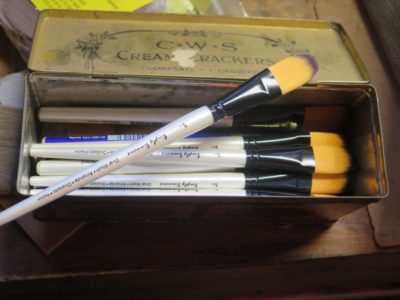


There are many excellent brands of watercolor brushes for artists that work brilliantly for wood finishing, but I have sorta settled on Simmons brushes in part because they were widely available at Michael’s. Even their cheapest brush, the “Simply Simmons” line, can provide an exquisite brushed surface. I have a few of the middle-quality brushes, the Simmons Sienna line, and they are even better. Of the premier line, the Simmons Sapphire, I have about a half dozen, and they are sublime, a blend of nylon fibers and sable bristles.
Regardless of which one you choose, and the price range is around $10-15 for the Simply Simmons to $75-100 for the Sapphire, you will have excellent results on undulating surfaces because the Oval Wash/Filbert Mop configuration does not have the square corner typical for most brushes. Those corners are the source of nothing but headaches on the carved or turned surface as it is the corners that “squeegee” off excess varnish, leading to the runs, drips, and errors that are the curse from finishing with the wrong tool.

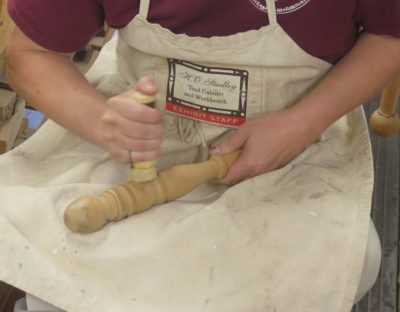


In this workshop I had a pile of turned spindles and frame-and-panel cabinet doors to provide the battleground for the exercises. As almost always the starting point is to burnish the entire surface with a polissoir, and I have designed a “Carver’s Model” polissoir with 3/4″ bristles for just this instance.


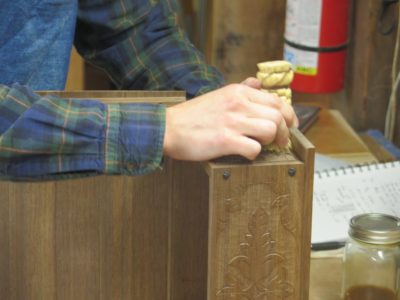
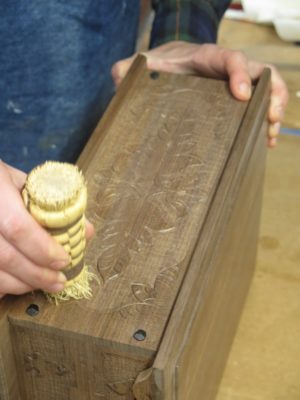
One of the real delights for the workshop was that one of the students had just made a carved Bible box the week before, and brought it along for the class.

The transformation of the raw carved surface by the application of a few minutes’ worth of burnishing was truly astounding.

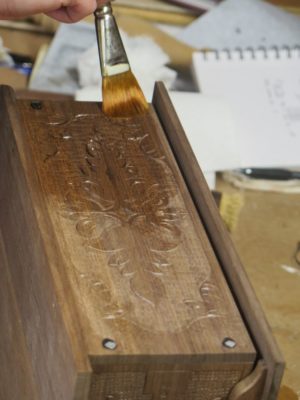

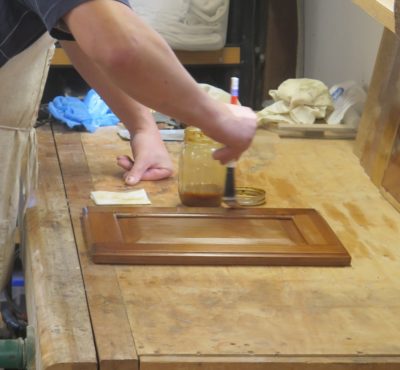
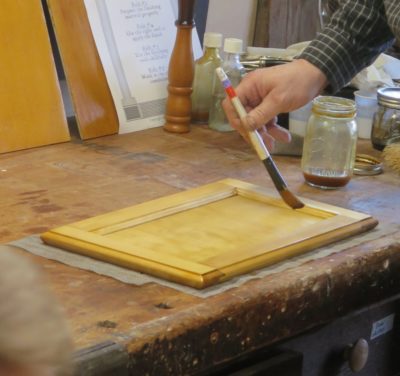
Then it was time to get to brushing the shellac varnish, and the draping character of the oval brushes – almost literally clinging to the irregular surface – was life-changing to the students as they were able to lay down multiple flawless applications of varnish.
Suddenly, what had been an aspect of wood finishing imparting fear and loathing became something to anticipate with celebration.



Join the Conversation!